A Gas Leakage Localization Method Based on a Virtual Ultrasonic Sensor Array
Abstract
:1. Introduction
2. Theory
2.1. Signal Model
2.2. Signal Preprocessing
2.3. Principle of the Location Algorithm
3. Experiment and Results
3.1. Experiments
3.2. Characteristics of Acoustic Emission Leakage Signals
3.3. Interference Analysis of the Algorithm
3.4. Results and Discussion
4. Conclusions
Author Contributions
Funding
Conflicts of Interest
References
- Aamo, O. Leak Detection, Size Estimation and Localization in Pipe Flows. IEEE Trans. Autom. Control 2016, 61, 246–251. [Google Scholar] [CrossRef]
- Sampaolo, A.; Patimisco, P.; Giglio, M.; Chieco, L.; Scamarcio, G.; Tittel, F.K.; Spagnolo, V. Highly sensitive gas leak detector based on a quartz-enhanced photoacoustic SF6 sensor. Opt. Express 2016, 24, 15872. [Google Scholar] [CrossRef] [PubMed]
- Sun, A.Y.; Lu, J.; Freifeld, B.M.; Hovorka, S.D.; Islam, A. Using pulse testing for leakage detection in carbon storage reservoirs: A field demonstration. Int. J. Greenh. Gas Control 2016, 46, 215–227. [Google Scholar] [CrossRef] [Green Version]
- Murvay, P.S.; Silea, I. A survey on gas leak detection and localization techniques. J. Loss Prev. Process Ind. 2012, 25, 966–973. [Google Scholar] [CrossRef]
- Mostafapour, A.; Davoudi, S. Analysis of leakage in high pressure pipe using acoustic emission method. Appl. Acoust. 2013, 74, 335–342. [Google Scholar] [CrossRef]
- Miller, R.; McIntire, P. Acoustic emission testing. American Society for Nondestructive Testing. Nondestruct. Test. Handb. 1987, 5, 603. [Google Scholar]
- Chou, H.; Mouritz, A.; Bannister, M.; Bunsell, A.R. Acoustic emission analysis of composite pressure vessels under constant and cyclic pressure. Compos. Part A Appl. Sci. Manuf. 2015, 70, 111–120. [Google Scholar] [CrossRef]
- Liao, P.; Cai, M. High accuracy method of ultrasonic gas leak direction detection based on time delay estimation. J. Beijing Univ. Aeronaut. Astronaut. 2013, 39, 391–395. [Google Scholar]
- Meng, L.; Jia, Z.; Yan, S.; Gao, S. Location technology of mix of TDOA and Generalized Cross Correlation. Comput. Meas. Control 2011, 19, 1798–1800. [Google Scholar]
- Kim, M.S.; Lee, S.K. Detection of leak acoustic signal in buried gas pipe based on the time–frequency analysis. J. Loss Prev. Process Ind. 2009, 22, 990–994. [Google Scholar] [CrossRef]
- Cui, X.; Yong, Y.; Ma, Y.; Lin, M.; Han, X. Localization of CO2 leakage from transportation pipelines through low frequency acoustic emission detection. Sens. Actuators A Phys. 2016, 237, 107–118. [Google Scholar] [CrossRef]
- Li, S.; Wen, Y.; Ping, L.; Jin, Y.; Dong, X.; Mu, Y. Leak location in gas pipelines using cross-time–frequency spectrum of leakage-induced acoustic vibrations. J. Sound Vib. 2014, 333, 3889–3903. [Google Scholar] [CrossRef]
- Xu, C.; Gong, P.; Xie, J.; Shi, H.; Chen, G.; Song, G. An acoustic emission based multi-level approach to buried gas pipeline leakage localization. J. Loss Prev. Process Ind. 2016, 44, 397–404. [Google Scholar] [CrossRef]
- Quy, T.B.; Muhammad, S.; Kim, J.M. A Reliable Acoustic Emission Based Technique for the Detection of a Small Leak in a Pipeline System. Energies 2019, 12, 1472. [Google Scholar] [CrossRef]
- Han, X.; Zhao, S.; Cui, X.; Yan, Y. Localization of CO2 gas leakages through acoustic emission multi-sensor fusion based on wavelet-RBFN modeling. Meas. Sci. Technol. 2019, 30, 8. [Google Scholar] [CrossRef]
- Tian, H.; Qiang, P.; Liu, Y.; Liu, X.; Hu, D. Near-field beamforming analysis for acoustic emission source localization. Ultrasonics 2012, 52, 587–592. [Google Scholar]
- Tao, W.; Wang, D.; Yu, P.; Wei, F. Gas leak localization and detection method based on a multi-point ultrasonic sensor array with TDOA algorithm. Meas. Sci. Technol. 2015, 26, 095002. [Google Scholar] [CrossRef]
- Zhang, Y.; Wang, J.; Bian, X.; Huang, X.; Qi, L. A continuous gas leakage localization method based on an improved beamforming algorithm. Measurement 2017, 106, 143–151. [Google Scholar] [CrossRef]
- Xu, B.; Yu, Z.; Yibo, L.; Xiaoyue, G.; Shijiu, J. A new method of using sensor arrays for gas leakage location based on correlation of the time-space domain of continuous ultrasound. Sensors 2015, 15, 8266–8283. [Google Scholar]
- Yan, Y.; Cui, X.; Guo, M.; Han, X. Localization of a continuous CO2 leak from an isotropic flat-surface structure using acoustic emission detection and near-field beamforming techniques. Meas. Sci. Technol. 2016, 27, 115105. [Google Scholar] [CrossRef]
- Wang, T.; Wang, X.; Hong, M. Gas Leak Location Detection Based on Data Fusion with Time Difference of Arrival and Energy Decay Using an Ultrasonic Sensor Array. Sensors 2018, 18, 2985. [Google Scholar] [CrossRef] [PubMed]
- Yan, Y.; Shen, Y.; Cui, X.; Hu, Y. Localization of multiple leak sources using acoustic emission sensors based on MUSIC algorithm and wavelet packet analysis. IEEE Sens. J. 2018, 18, 9812–9820. [Google Scholar] [CrossRef]
- Comesana, D.F.; Holland, K.R.; Escribano, D.G.; de Bree, H.E. An Introduction to Virtual Phased Arrays for Beamforming Applications. Arch. Acoust. 2014, 39, 81–88. [Google Scholar] [CrossRef]
- Curlander, J.C.; McDonough, R.N. Synthetic Aperture Radar- Systems and Signal Processing; John Wiley and Sons, Inc.: New York, NY, USA, 1991. [Google Scholar]
- Cutrona, L.J. Comparison of sonar system performance achievable using synthetic-aperture techniques with the performance achievable by more conventional means. J. Acoust. Soc. Am. 1975, 58, 336–348. [Google Scholar] [CrossRef]
- Holl, P.M.; Reinhard, F. Holography of Wi-fi radiation. Phys. Rev. Lett. 2017, 118, 183901. [Google Scholar] [CrossRef] [PubMed]
- Luo, Z.W.; Comesana, D.F.; Zheng, C.J.; Bi, C.X. Near-field acoustic holography with three-dimensional scanning measurements. J. Sound Vib. 2019, 439, 43–55. [Google Scholar] [CrossRef]
- Clement, G.; White, J.; Hynynen, K. Investigation of a large-area phased array for focused ultrasound surgery through the skull. Phys. Med. Biol. 2000, 45, 1071. [Google Scholar] [CrossRef] [PubMed]
- Dayou, M.A. Development of The Law of Turbulent Jet Noise. Acta Acust. 1988, 1, 3. [Google Scholar]
- Cui, X.; Yan, Y.; Guo, M.; Han, X.; Hu, Y. Localization of CO2 Leakage from a Circular Hole on a Flat-Surface Structure Using a Circular Acoustic Emission Sensor Array. Sensors 2016, 16, 1951. [Google Scholar] [CrossRef]
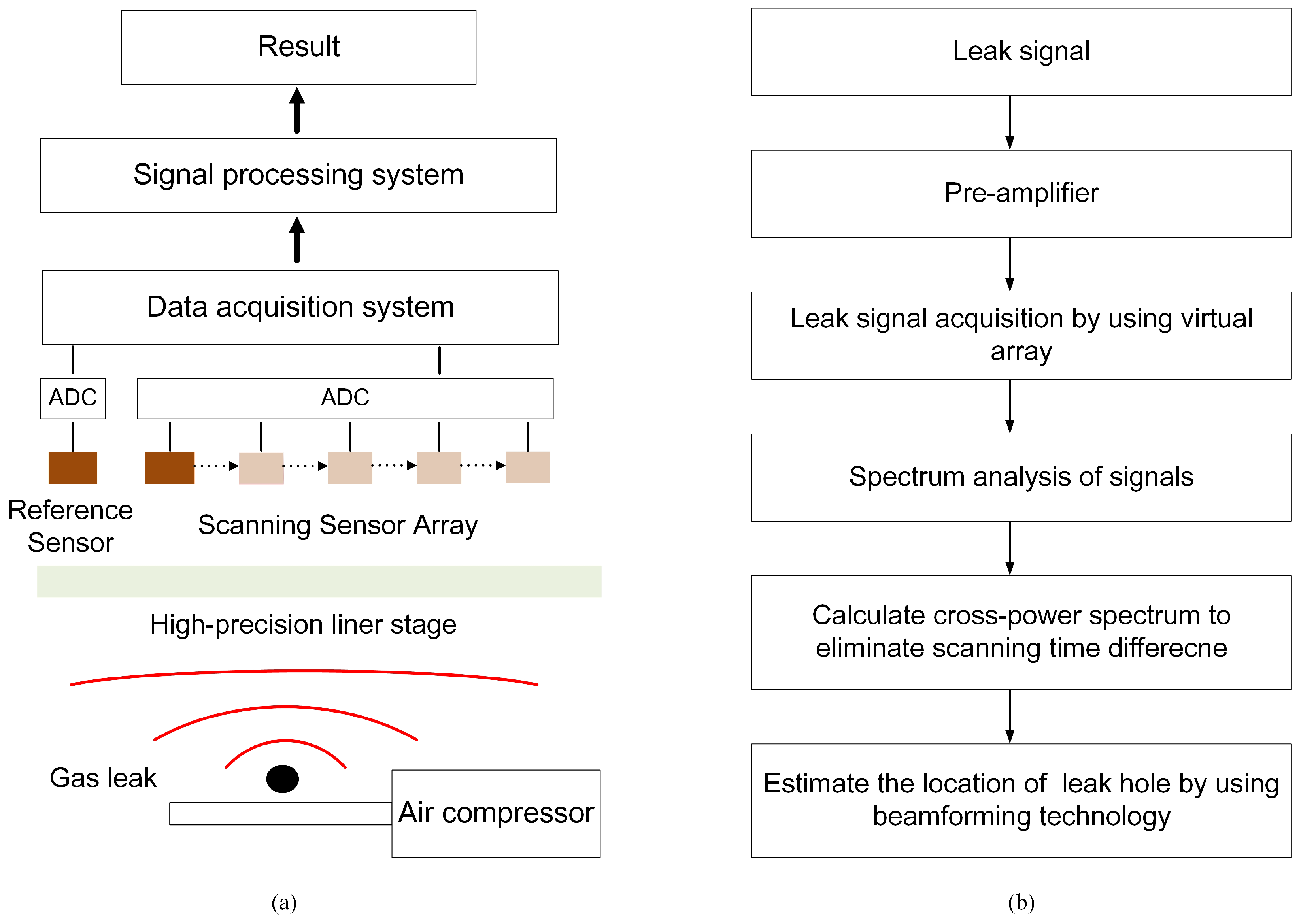

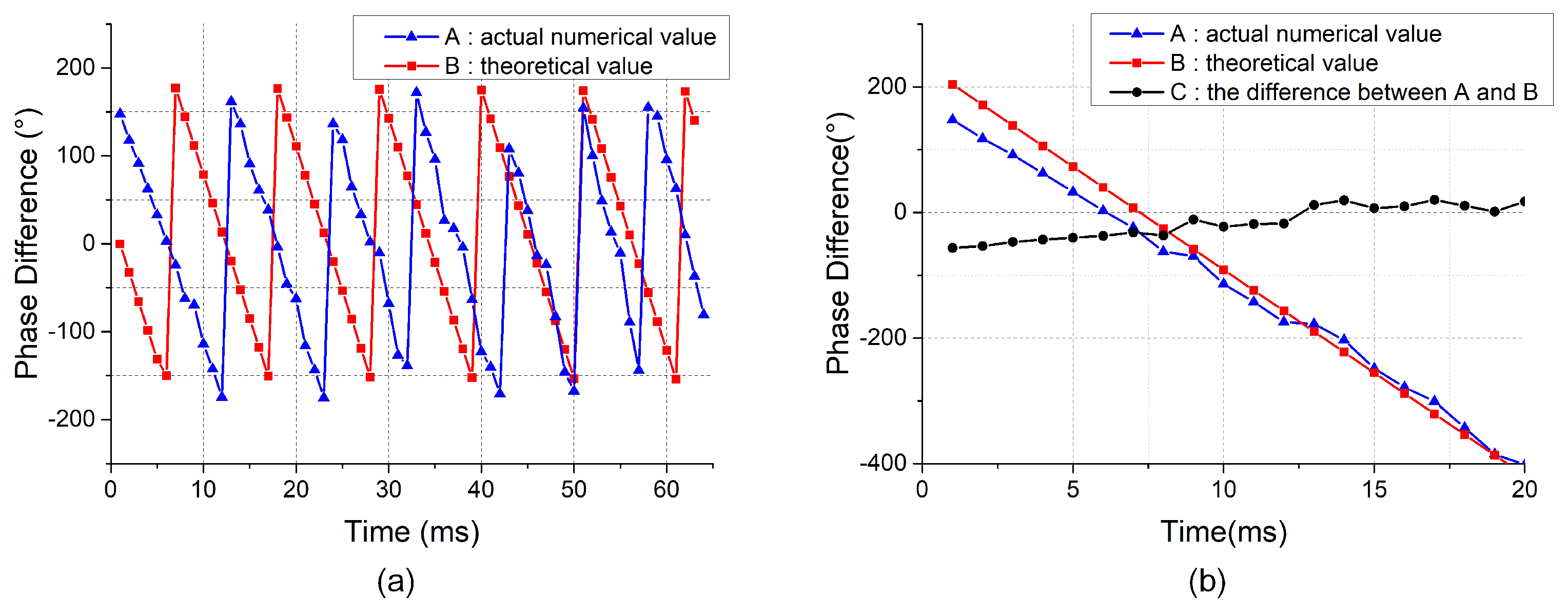
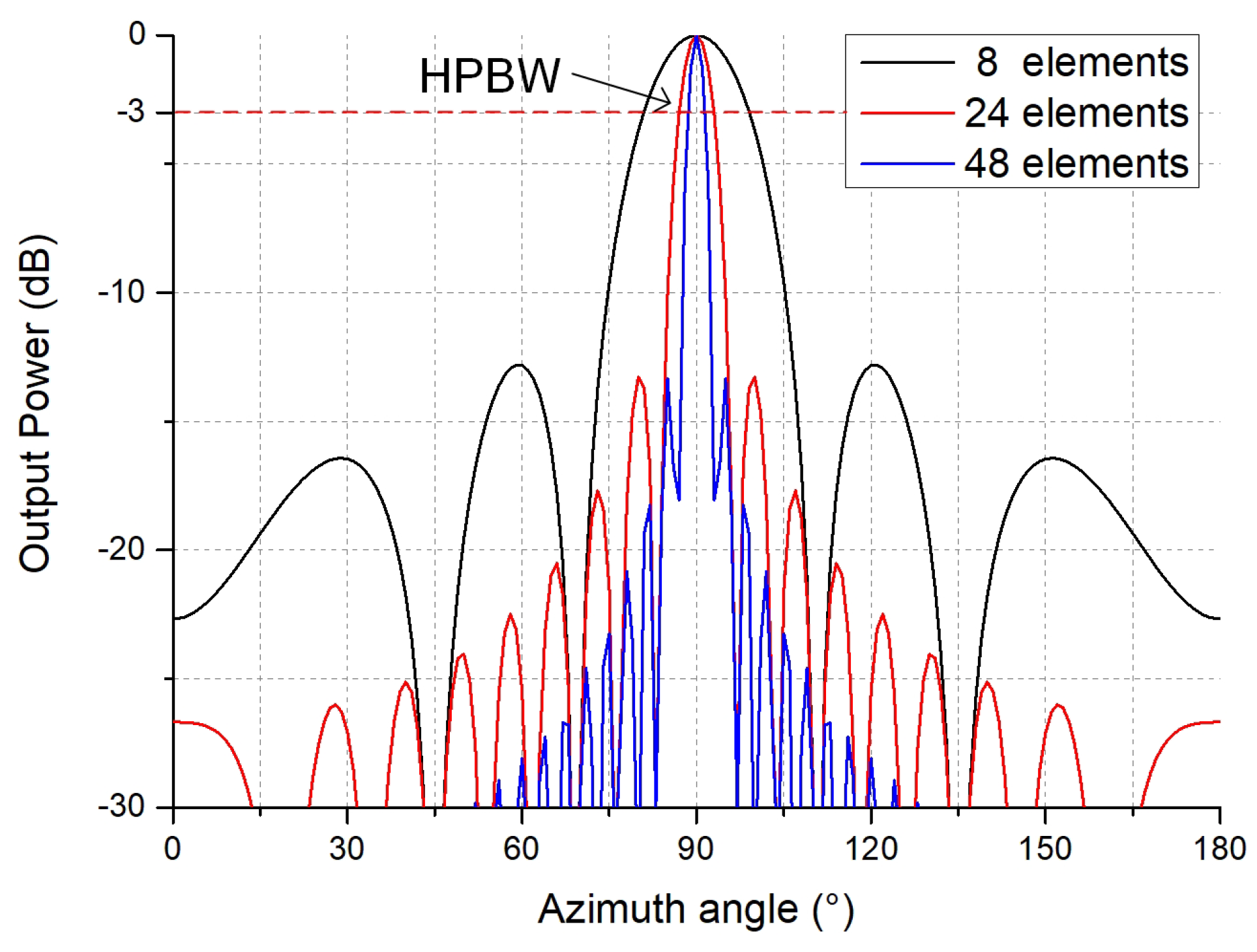
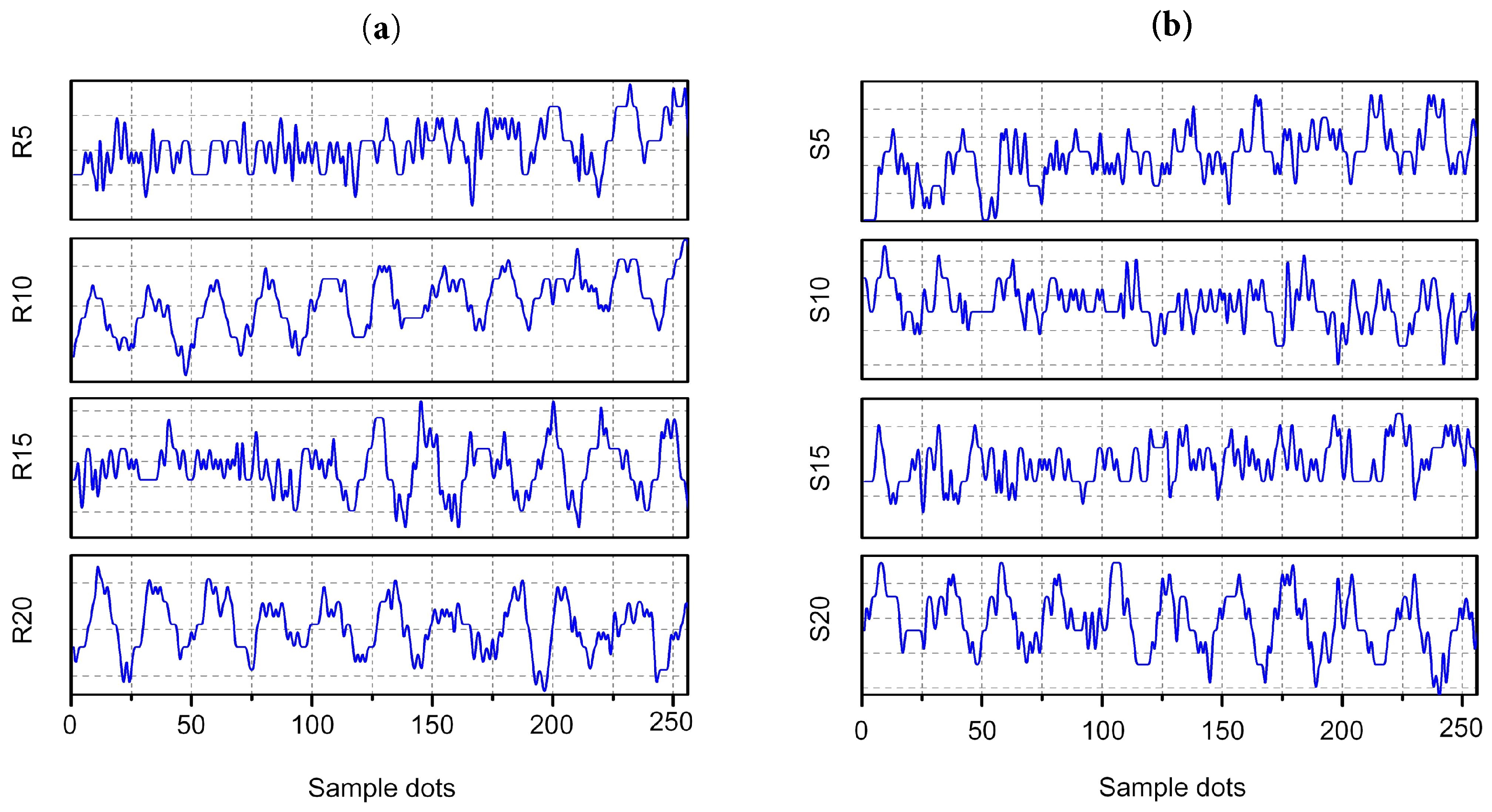
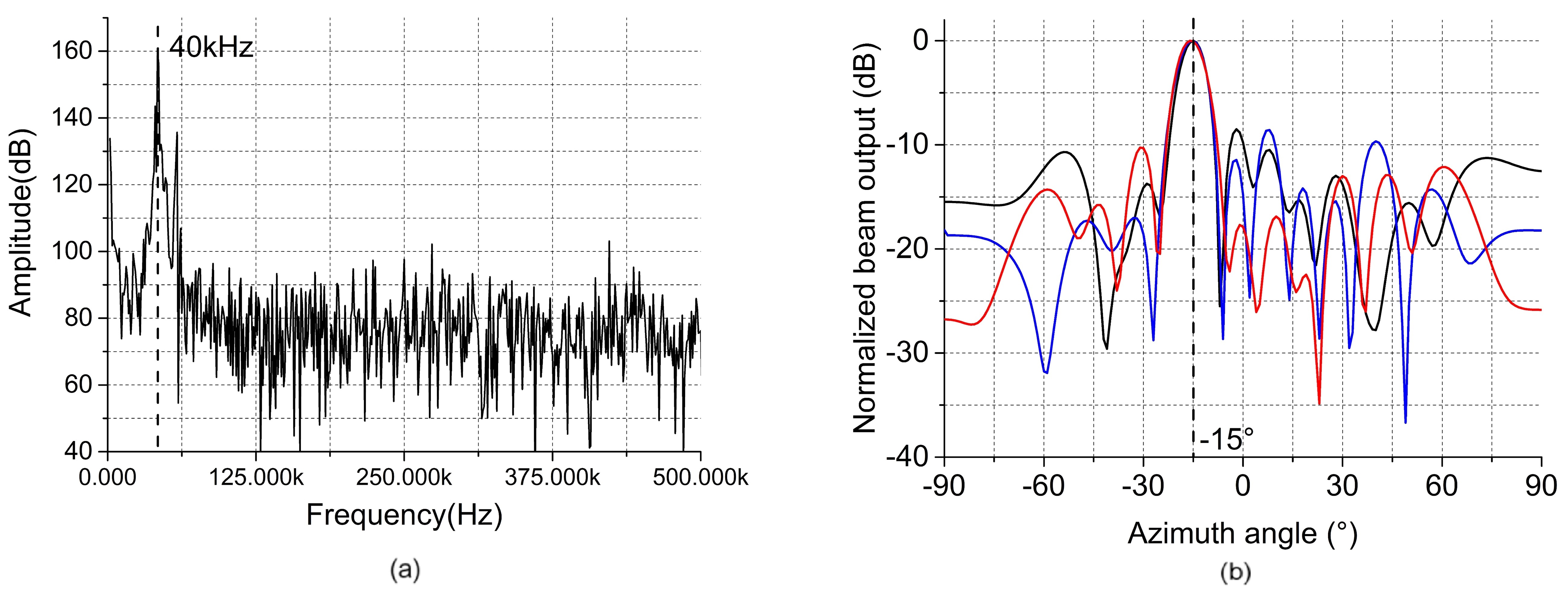
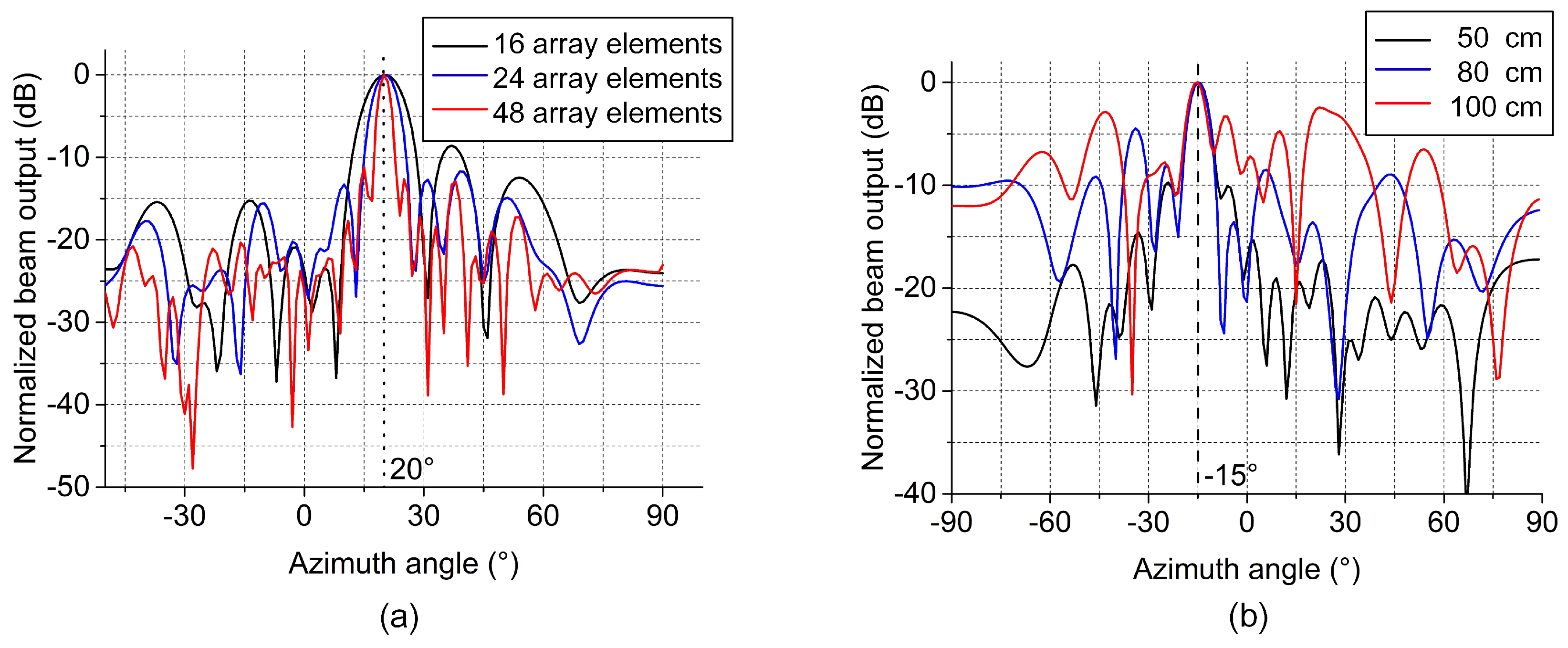
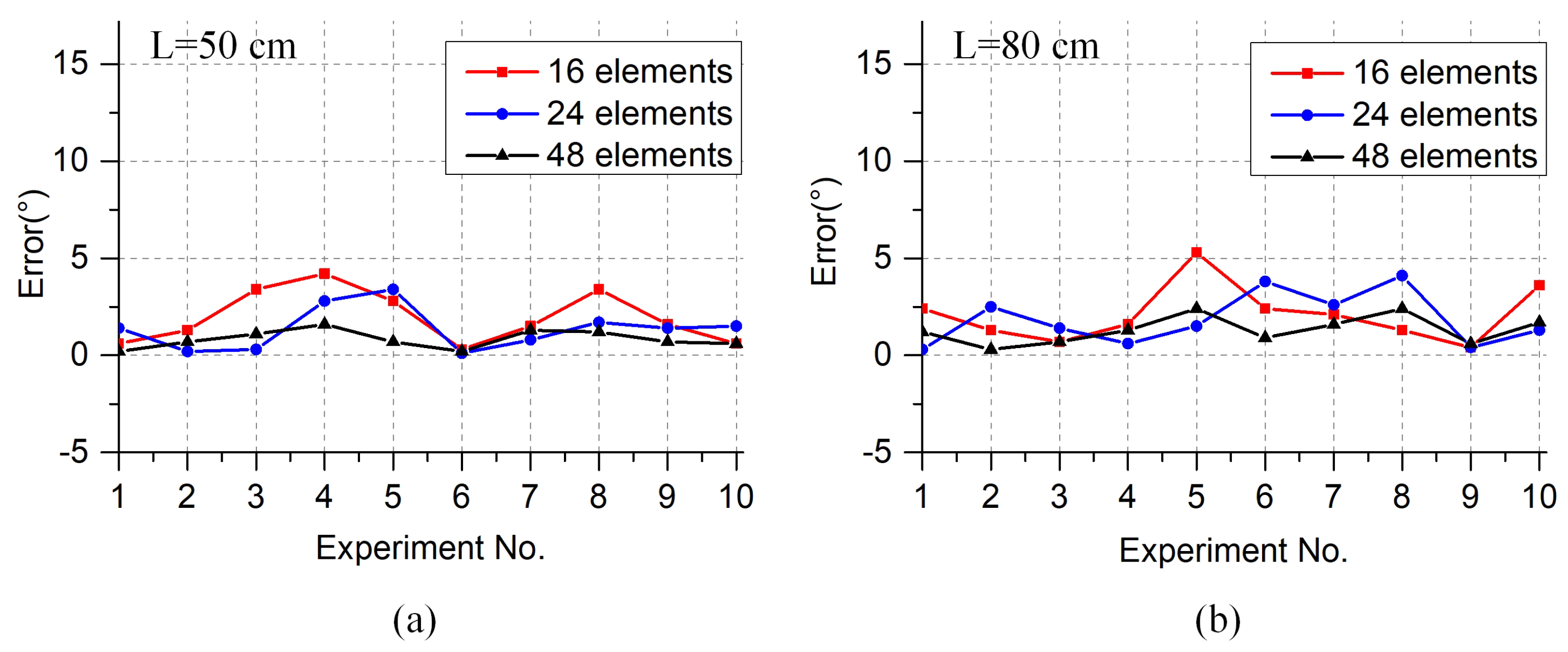
| Item | Value |
|---|---|
| Diameter | 15 mm |
| Directivity | 50 deg |
| Sensitivity | −16 dB |
| Center frequency | 40 kHz |
| Detection distance | 0.2–6 m |
| Time (ms) | A: Actual Numerical Value () | B: Theoretical Value () | C: Difference between A and B () |
|---|---|---|---|
| 2 | 117.79 | 171.31 | −53.51 |
| 4 | 62.52 | 105.69 | −43.17 |
| 6 | 2.94 | 40.07 | −37.14 |
| 8 | −62.17 | −25.54 | −36.62 |
| 10 | −113.79 | −91.16 | −22.63 |
| 12 | −174.48 | −156.78 | −17.70 |
| 14 | −203.07 | −222.39 | 19.32 |
| 16 | −278.19 | −288.01 | 9.82 |
| 18 | −342.82 | −353.62 | 10.81 |
| 20 | −401.74 | −419.24 | 17.50 |
| Number | Error () (L = 50 cm) | Error () (L = 80 cm) | ||||
|---|---|---|---|---|---|---|
| 16 Elements | 24 Elements | 48 Elements | 16 Elements | 24 Elements | 48 Elements | |
| 1 | 0.6 | 1.4 | 0.2 | 2.4 | 0.3 | 1.2 |
| 2 | 1.3 | 0.2 | 0.7 | 1.3 | 2.5 | 0.3 |
| 3 | 3.4 | 0.3 | 1.1 | 0.7 | 1.4 | 0.7 |
| 4 | 4.2 | 2.8 | 1.6 | 1.6 | 0.6 | 1.3 |
| 5 | 2.8 | 3.4 | 0.7 | 5.3 | 1.5 | 2.4 |
| 6 | 0.3 | 0.1 | 0.2 | 2.4 | 3.8 | 0.9 |
| 7 | 1.5 | 0.8 | 1.3 | 2.1 | 2.6 | 1.6 |
| 8 | 3.4 | 1.7 | 1.2 | 1.3 | 4.1 | 2.4 |
| 9 | 1.6 | 1.4 | 0.7 | 0.4 | 0.4 | 0.6 |
| 10 | 0.6 | 1.5 | 0.6 | 3.6 | 1.3 | 1.7 |
| Mean error | 2.0 | 1.4 | 0.8 | 2.1 | 1.9 | 1.3 |
| Standard deviation | 1.3 | 1.0 | 0.4 | 1.3 | 1.3 | 0.7 |
© 2019 by the authors. Licensee MDPI, Basel, Switzerland. This article is an open access article distributed under the terms and conditions of the Creative Commons Attribution (CC BY) license (http://creativecommons.org/licenses/by/4.0/).
Share and Cite
Li, L.; Yang, K.; Bian, X.; Liu, Q.; Yang, Y.; Ma, F. A Gas Leakage Localization Method Based on a Virtual Ultrasonic Sensor Array. Sensors 2019, 19, 3152. https://doi.org/10.3390/s19143152
Li L, Yang K, Bian X, Liu Q, Yang Y, Ma F. A Gas Leakage Localization Method Based on a Virtual Ultrasonic Sensor Array. Sensors. 2019; 19(14):3152. https://doi.org/10.3390/s19143152
Chicago/Turabian StyleLi, Lei, Kuan Yang, Xiaoyu Bian, Qinghui Liu, Yizhuo Yang, and Fengying Ma. 2019. "A Gas Leakage Localization Method Based on a Virtual Ultrasonic Sensor Array" Sensors 19, no. 14: 3152. https://doi.org/10.3390/s19143152





